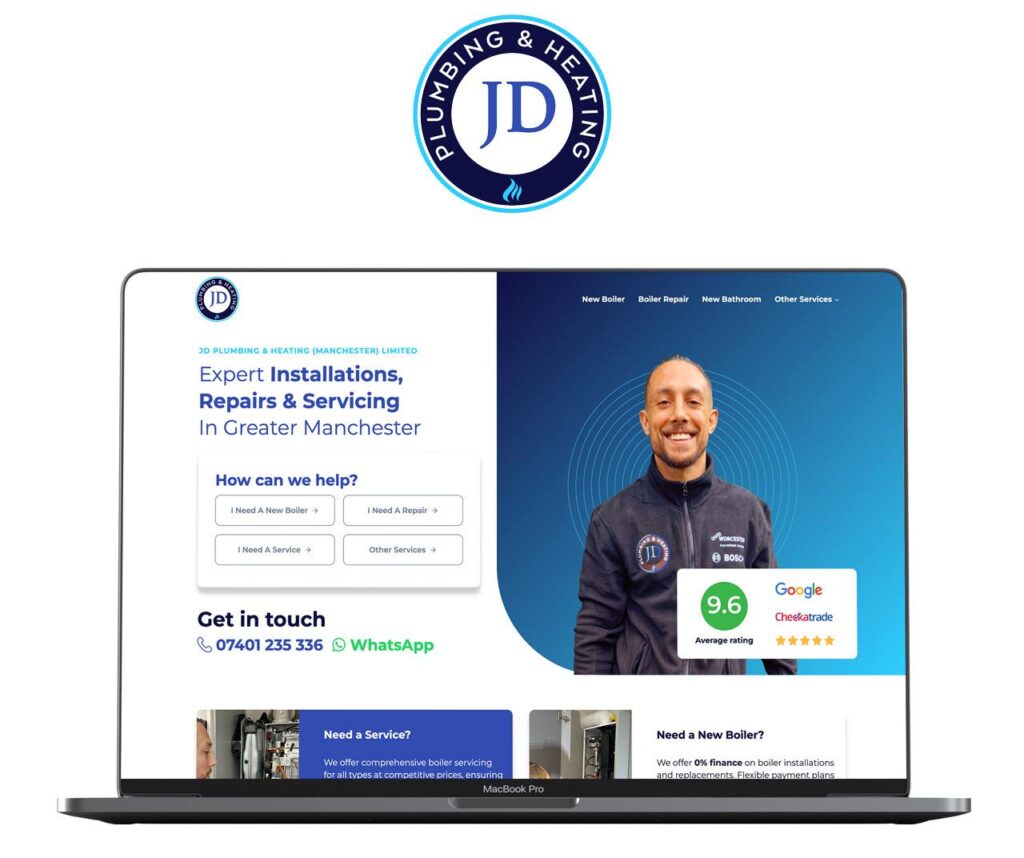Top 5 Tips for Building a Successful Website

In today’s digital landscape, building a successful website is crucial for businesses, personal projects, and anyone looking to establish an online presence. Whether you’re creating a website from scratch or improving an existing one, there are several key factors that will ensure your website stands out, engages visitors, and meets your goals. Here, we’ll cover the top five tips for building a successful website that’s visually appealing, user-friendly, and effective.
1. Prioritise User Experience (UX)
When building a website, user experience should be at the top of your priority list. A site that’s difficult to navigate, slow to load, or not mobile-friendly will drive visitors away, no matter how great the content is.
Key UX tips for a successful website:
- Clear Navigation: Ensure your site’s navigation is intuitive and straightforward. Users should be able to find what they’re looking for with minimal effort.
- Mobile Responsiveness: With more people browsing the web on their phones, it’s crucial to make sure your website is fully responsive. Your site should look and function well on any screen size.
- Fast Loading Speeds: Optimise images, minimise code, and consider using a Content Delivery Network (CDN) to ensure your pages load quickly. Page speed is important not only for user experience but also for SEO.
2. Keep the Design Simple and Clean
A cluttered, overly complicated design can overwhelm visitors and distract them from your message. Simplicity is key when it comes to effective web design. A clean, minimalistic design not only looks professional but also enhances usability.
Design tips to follow for a successful website:
- Whitespace: Don’t be afraid to use whitespace (empty space) to give your content room to breathe. This helps guide the visitor’s attention and makes your site easier to read.
- Consistent Branding: Use consistent fonts, colours, and imagery that align with your brand identity. This creates a cohesive experience for visitors and makes your website more memorable.
- Focus on Readability: Choose fonts and font sizes that are easy to read, and use contrasting colours to ensure your text is visible against the background. Break up content into digestible chunks using headings, subheadings, and bullet points.

3. Optimise for SEO
Search Engine Optimisation (SEO) is crucial for making your website discoverable by search engines like Google. By following SEO best practices, you can improve your site’s ranking in search results and attract more organic traffic.
Key SEO tips for a successful website:
- Keyword Research: Identify the search terms your target audience is using, and incorporate them naturally into your content, title tags, and meta descriptions.
- Optimise Page Titles and Meta Descriptions: Ensure each page has a unique title tag and meta description that accurately describes the content and includes relevant keywords.
- Improve Site Structure: Use a clear site hierarchy with internal links to help search engines understand the organisation of your content. A well-structured site also improves user experience.
- Use Alt Text for Images: Include descriptive alt text for all images. This not only helps with accessibility but also allows search engines to index your images, improving your overall SEO.
4. Focus on High-Quality Content
Your website’s content is one of the most important elements for engaging visitors and encouraging them to return. Whether you’re creating blog posts, product descriptions, or landing pages, your content should provide value and be tailored to your audience’s needs.
Content creation tips for a successful website:
- Provide Value: Ensure your content answers the questions and solves the problems your target audience is facing. Valuable, relevant content is more likely to be shared and linked to.
- Update Regularly: Keep your content fresh and up to date. Regularly updating your blog or website with new posts, case studies, or product information helps retain visitors and improves SEO.
- Include Clear Calls-to-Action (CTAs): Guide your visitors toward specific actions, whether it’s making a purchase, signing up for a newsletter, or contacting you. Make your CTAs clear, compelling, and easy to find.
5. Ensure Strong Security
Website security is critical, not only for protecting your data but also for ensuring the safety and trust of your visitors. A secure website builds trust with users and helps improve your site’s ranking on search engines.
Security tips for a successful website:
- Install an SSL Certificate: An SSL certificate encrypts data exchanged between your website and its visitors, adding a layer of security and signalling to users that your site is safe. Websites with SSL certificates also rank better in search results.
- Regular Backups: Regularly back up your website to ensure that you can recover your data in case of a security breach or technical issue.
- Keep Software Updated: Ensure your website platform, themes, plugins, and other software are updated regularly to avoid vulnerabilities. Hackers often target outdated software with security flaws.
- Use Strong Passwords: Make sure all administrator accounts use strong, unique passwords, and consider implementing two-factor authentication for additional security.
Conclusion
Building a successful website involves more than just good design. By focusing on user experience, keeping the design simple, optimising for SEO, creating quality content, and maintaining strong security, you can create a website that not only looks great but also delivers results.
At Nett of Stockport, we follow these design tips when creating our websites to ensure they stand out and perform effectively. Feel free to check out our portfolio to see examples of successful websites we’ve developed for clients.
Whether you’re starting from scratch or improving an existing website, these tips will help you build a successful website that achieves your online goals.





